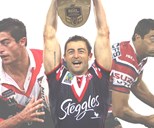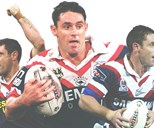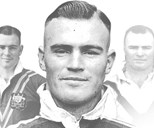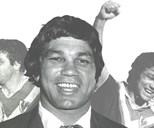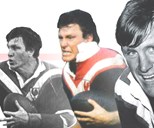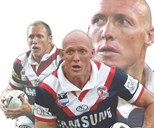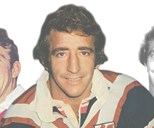Sydney Roosters Centurions

In 2007, the Sydney Roosters announced "The Centurions", a team consisting of those regarded as the greatest players to have played 100 or more games for the Club between 1908 and 2007.
The team was selected by Ray Chesterton, Ian Heads, David Middleton and Alan Clarkson and was unveiled at the centenary season launch at the Michael Algeri Pavilion on 10 March 2007.
1. Anthony Minichiello (2000-2014)
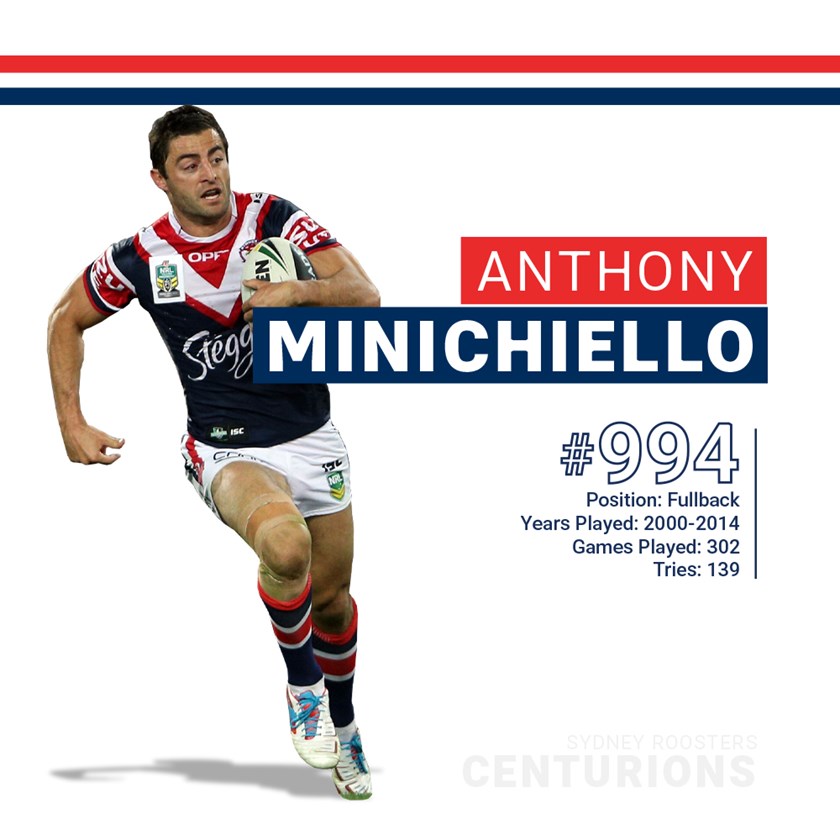
A one-Club man, Anthony Minichiello is currently the second-most capped player in Sydney Roosters history.
In an NRL career that spanned over 15 seasons, Minichiello played in six grand finals, winning two Premierships in 2002 and 2013 respectively, captaining the side in the latter.
In the representative arena, he represented Australia on 19 occasions, captained Italy in the 2013 World Cup, made 11 appearances for the NSW Blues and represented NSW City four times.
Making his debut for the Roosters on the wing in 2000, Minichiello’s rise was rapid, playing his first NRL Grand Final that season before first tasting Premiership victory in 2002, featuring in the 2003 and 2004 NRL Grand Finals as well.
Having made the switch to fullback in 2003, Minichiello was named Dally M Fullback of the Year in 2004. In 2005, Minichiello won the ‘Golden Boot’, awarded to the player voted the Best in the World.
In 2006, persistent back, neck and ankle injuries looked like they would halt his career but a determination to succeed led to the rebuilding of his body and life.
True grit, determination and belief saw him return to peak form that led to him continuing his journey of a brilliant and fulfilling career and ending on his own terms.
He assumed the Sydney Roosters captaincy in 2013, which was a record year for the Club, which saw the team score a record six shut-outs and secure the Club Championship and Minor Premiership on their way to winning the title.
2. Bill Mullins (1968-1978)
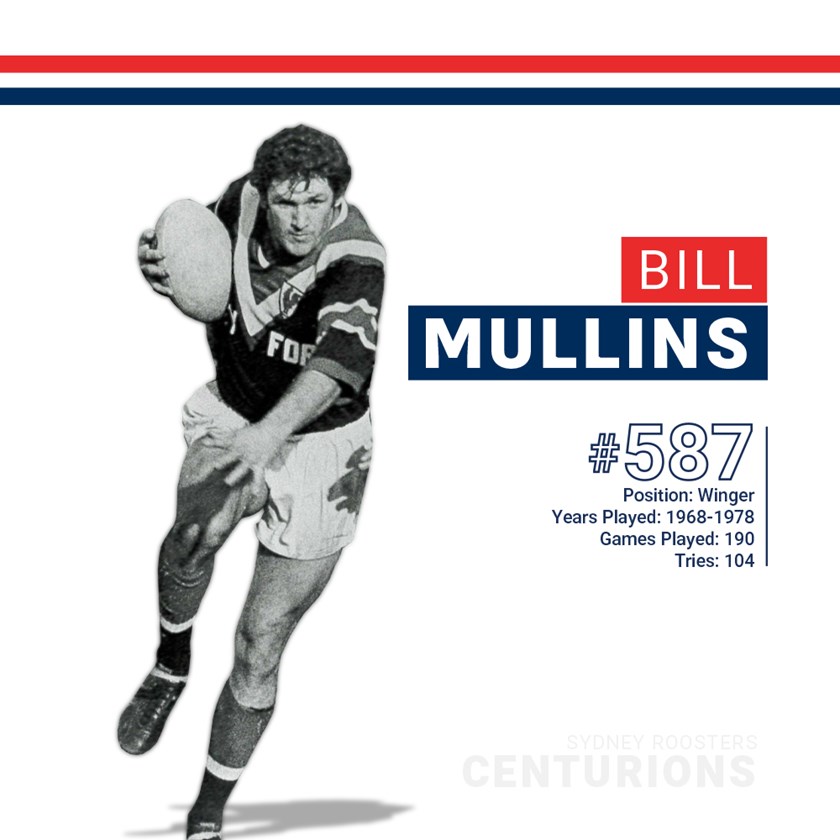
Even though modern-day wingers tend to be big and fast like Bill Mullins was, most opponents in his era were much smaller.
Mullins used his remarkable athleticism to become the first Roosters’ player to score 100 career tries.
He played in the Roosters’ 1974 and 1975 premiership teams, scoring a try in the ’74 decider against Canterbury.
His son Brett Mullins was a member of the Roosters’ 2002 Premiership-winning side.
3. Mark Harris (1970-1979)
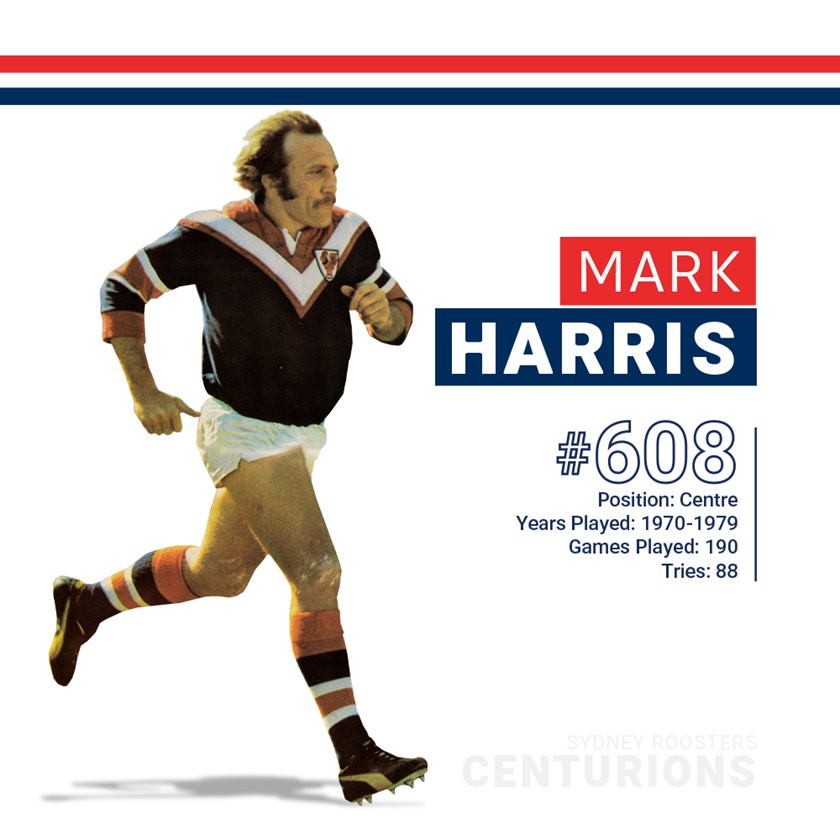
1970s flyer Mark Harris was an unusually big centre for his era, and he used that size to full effect, especially in attack.
He played in the Roosters’ legendary 1974/75 grand final-winning teams, and represented Australia at two World Cups.
Harris was also a gridiron trailblazer.
He unsuccessfully trialled for the NFL’s Philadelphia Eagles in 1973, but was picked up by a Canadian team and played several matches in their league during one season before returning to the Roosters.
4. John Brass (1969-1976)
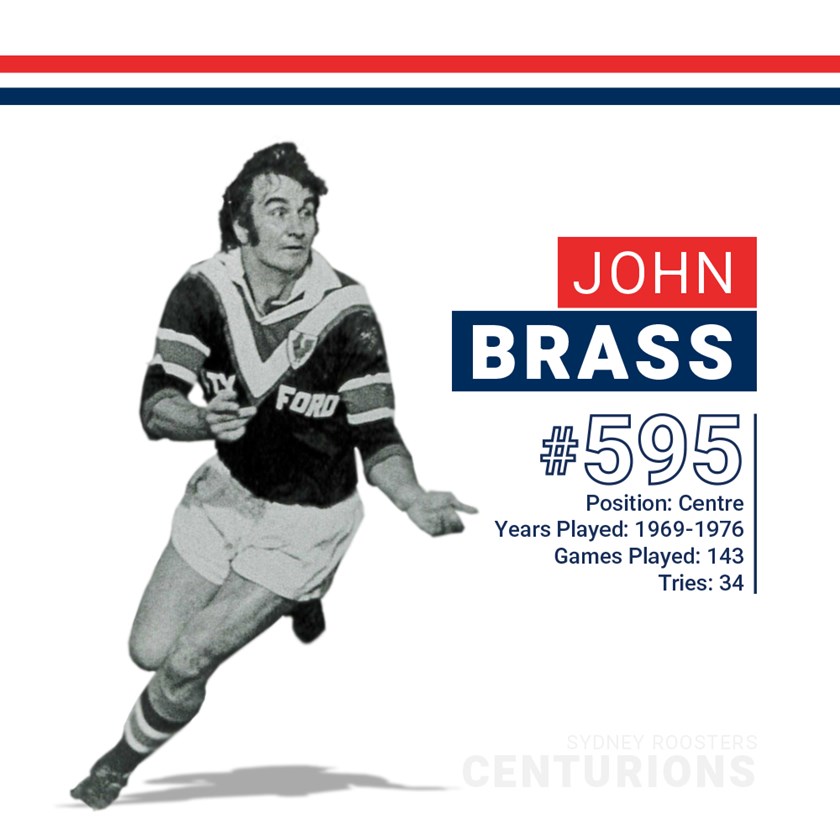
Regarded as one of the most successful converts from the amateur code during the modern era John Brass was a classy centre renowned for his great handling skills and brick-wall defence.
With 12 rugby Tests to his credit, Brass switched codes on a record $30,000 contract to play with Easts in 1969.
The following year he captained both his Club and state before becoming a dual international when he played in all three Tests against the Ashes-winning Great Britain side.
Brass declined to tour with Australia's victorious World Cup squad in 1970 due to business and family reasons but was a mainstay of the Roosters' great sides of the 1970s.
Although missing the 1972 grand final loss to Manly because of injury, Brass played in both 1974-75 grand final successes with Easts.
An accomplished inside centre and prolific goal-kicker, he scored 213 points during the 1974 season.
After making himself available for rep duty in 1975, he captained Australia to victory against the Kiwis in a World Series match before touring Great Britain for the latter half of the short-lived competition.
5. Ian Schubert (1975-1980, 1982)
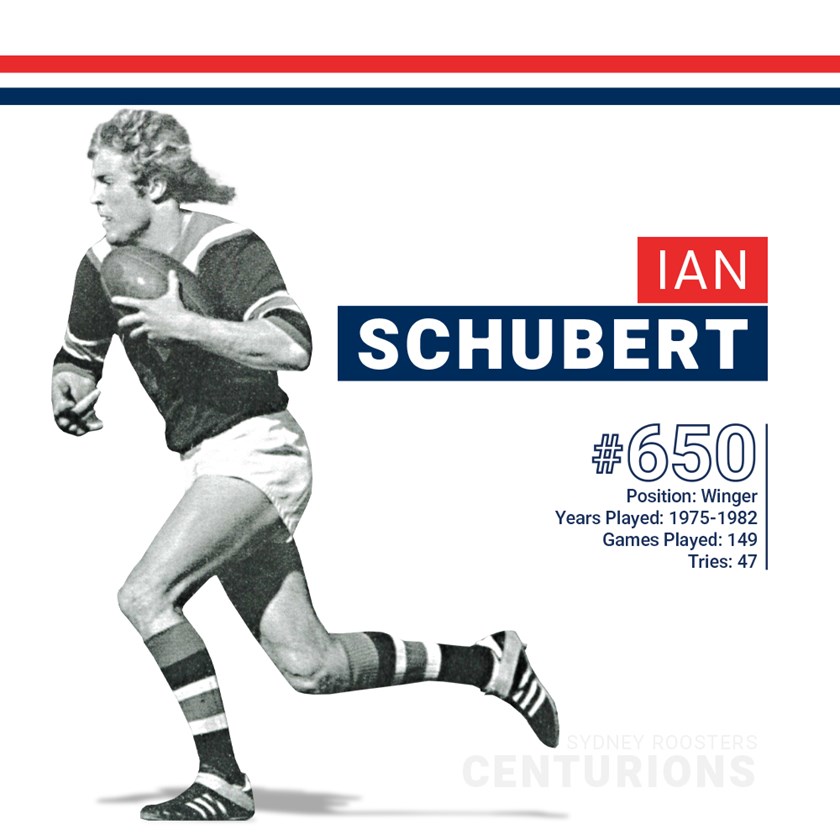
Known for his pace out wide, Ian Schubert was first recommended to Eastern Suburbs coach Jack Gibson in 1974.
Although not out of school at the time, Schubert instantly became a regular first grader on the wing - in the process relegating the previous season's leading try scorer Bill Mullins to reserve grade.
When he was shifted to fullback to cover for the injured Russell Fairfax, the results were devastating.
Schubert scored 14 tries that year and was named 'Man Of The Match' in the 1975 grand final.
He completed the season with Australian selection for that season's World Cup and was also a member of the Eastern Suburbs side that defeated St Helens in the first-ever World Club Challenge match in 1976.
6. Brad Fittler (1996-2004)
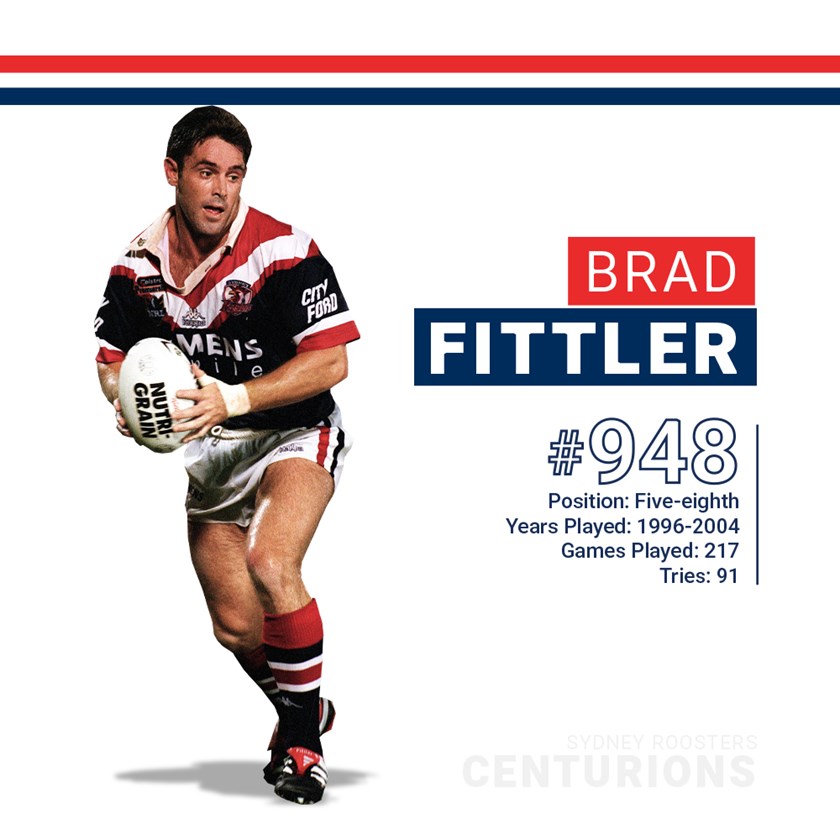
After starting his career at Penrith in the late 1980s, Brad ‘Freddy’ Fittler joined the Roosters as a marquee signing in 1996.
He quickly showed his class and won the Nokia Provan-Summons Medal (the equivalent then of today’s Dally M Medal for the best player in the competition) in 1997.
Fittler had one of the best steps in the game, which, combined with his size, made him a major attacking threat.
He captained the Roosters to a premiership in 2002, steered New South Wales to several State of Origin series wins and led Australia to a World Cup victory during his time at the Club.
His influence was such that he is widely considered among the best five-eighths of all time.
7. Kevin Hastings (1976-1987)
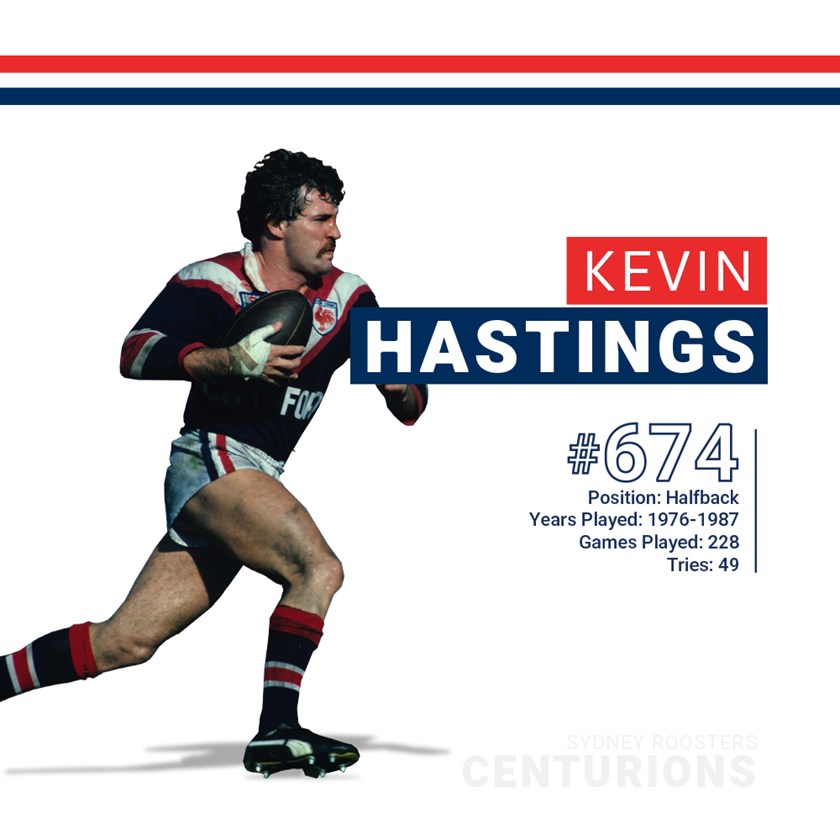
Kevin ‘Horrie’ Hastings was the first player to reach 200 first grade games for Eastern Suburbs.
He won the Rothman’s Medal in 1981 and was voted the Rugby League Week Player of the Year in three consecutive years (1980-1982).
A member of the Easts side that lost to Canterbury in the 1980 grand final, his sole appearance for NSW was as a reserve in 1983.
Hastings was also runner-up in the 'Dally M' Player of the Year award in 1980-82.
8. Ray Stehr (1929-1942, 1945-1946)
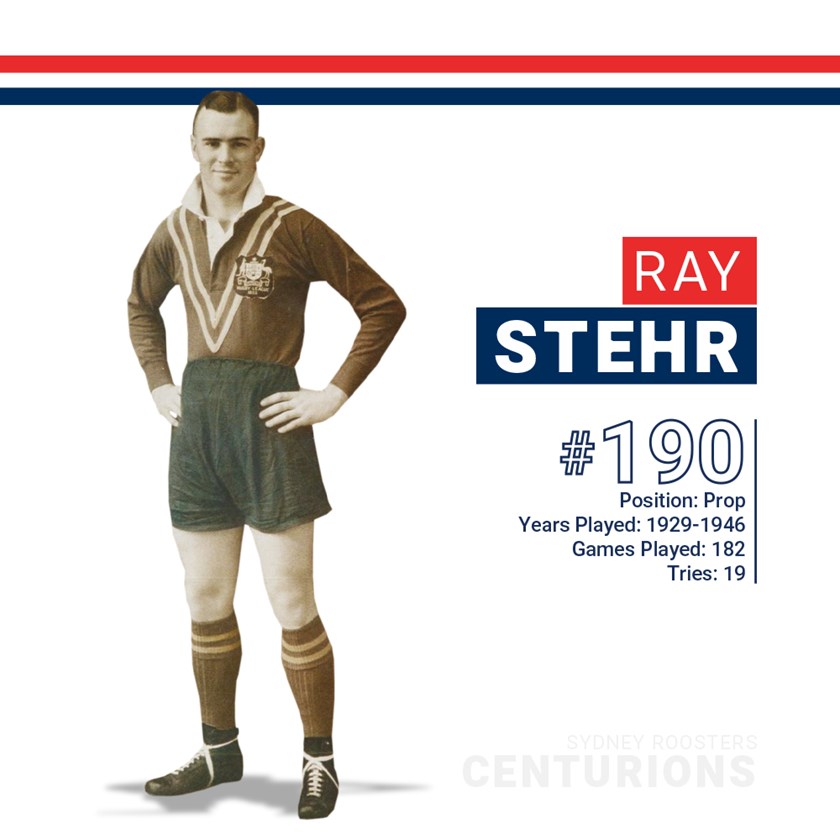
Ray Stehr was a tough prop who overcame a spinal issue as a child to make his first-grade debut for the Roosters at just 16.
He was part of a dominant Roosters’ forward pack during their golden era in the 1930s when they went through three seasons losing just one match.
Stehr won five premierships with the Club, captaining the team in their 1940 and 1945 grand final wins, and is considered one of rugby league’s greatest ever front rowers.
9. Sandy Pearce (1908-1921)
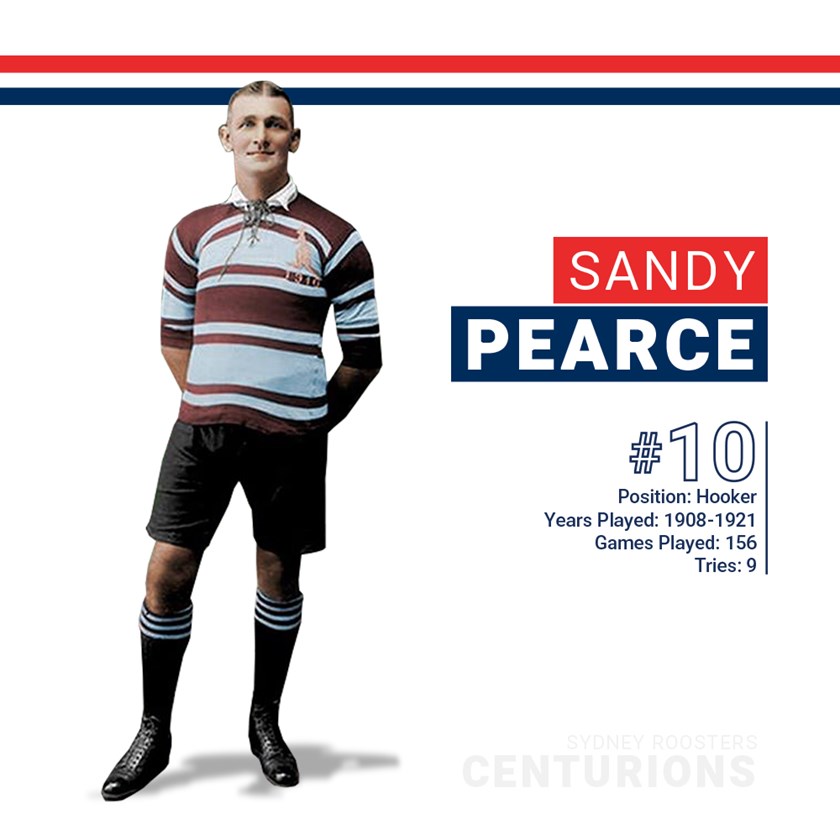
Sandy Pearce was the Roosters’ inaugural hooker, winning three premierships with the Club as they established themselves as a force in the early years of Australian rugby league.
He was the first player to reach the 100-game milestone for the tri-colours, as well as the first to notch up 150 top grade games for the Club. He also represented NSW and Australia for most of his career.
10. Arthur Beetson (Captain, 1971-1978)
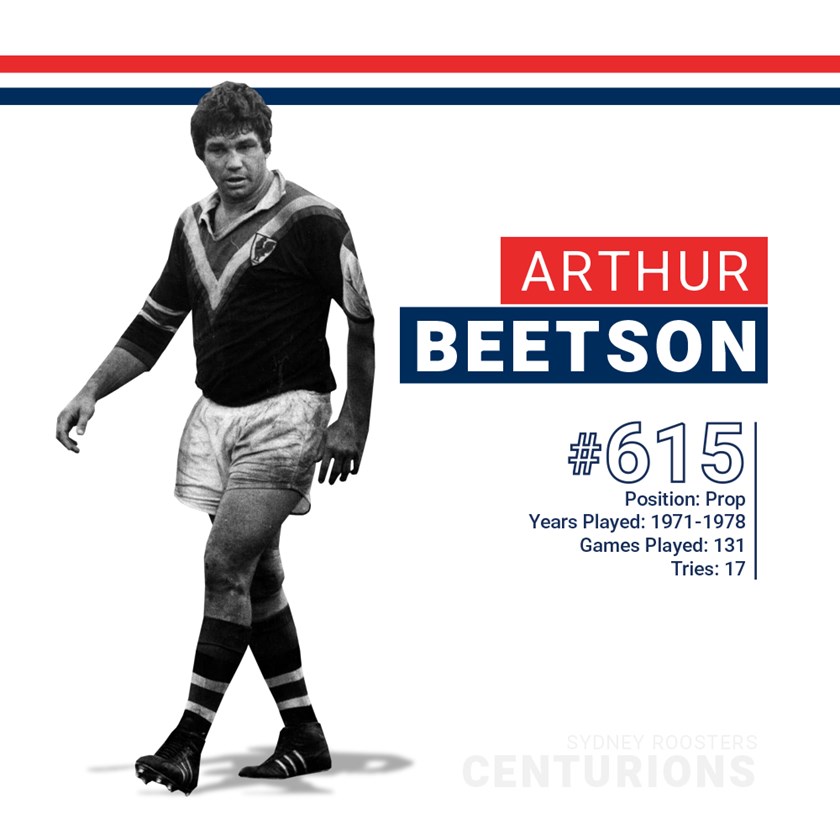
Arthur Beetson was named as the seventh rugby league immortal in 2004.
He had brilliant ball skills and his ability to offload, despite the attention of several defenders, became legendary.
‘Artie’ also had good speed for a man of his size and was a strong, tough defender.
He captained the Roosters’ premiership-winning teams in 1974 and 1975 and was named the Rugby League Week Player of the Year in 1974.
While at the Roosters, he also became the first Indigenous player to captain Australia in any sport.
11. Ron Coote (1972-1978)
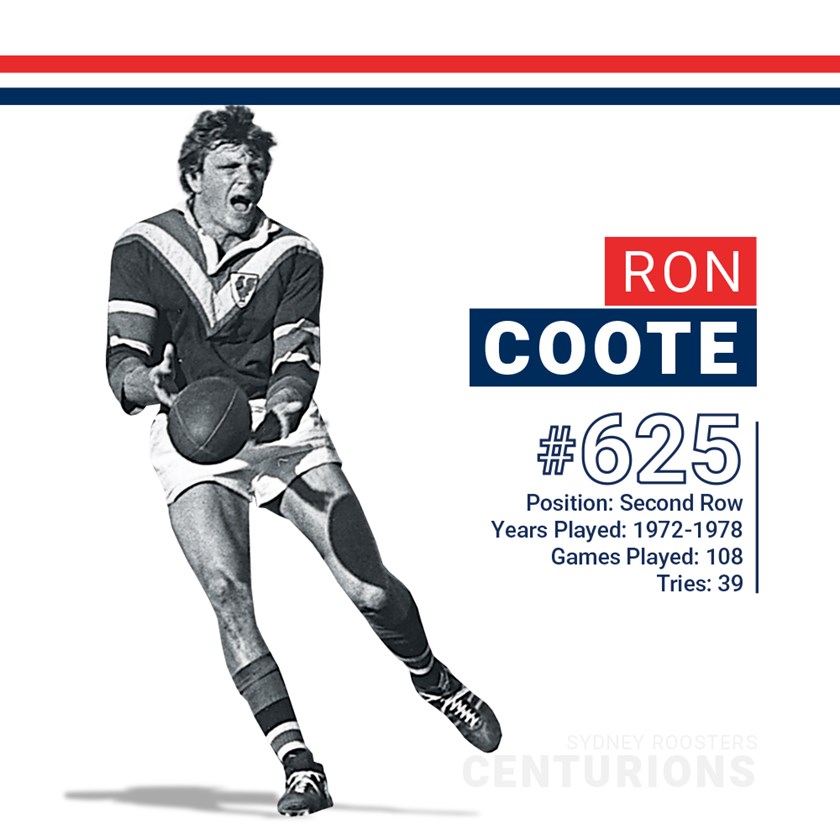
The tall, rangy, mobile middle was at the height of his career when he joined Eastern Suburbs in 1972.
He formed a great combination with Artie Beetson, with the sight of Coote running off a Beetson pass becoming as well-known as his brilliant cover defence.
Coote was a key member of both the 1974 and 1975 Roosters’ premiership teams, and continued to play for Australia for several years after joining the Club.
12. Joe Pearce (1929-1942)
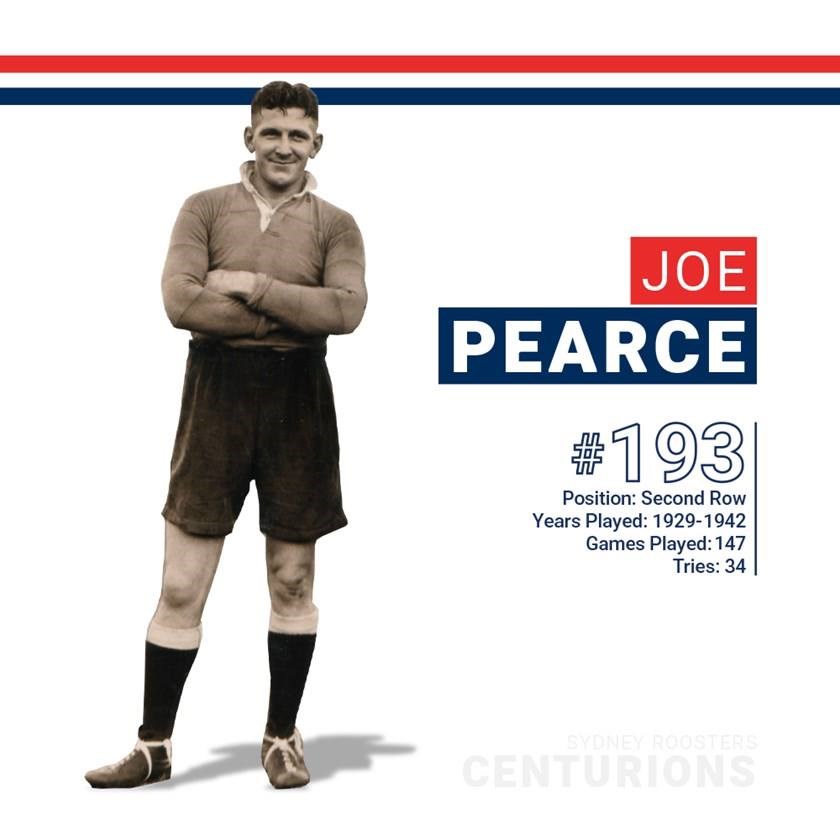
Joe Pearce was a member of the Roosters’ dominant forward pack in their golden era during the mid-1930s.
Noted for his ball-playing ability, Pearce won four premierships with Eastern Suburbs and is considered by many to be one of the greatest second-rowers of all-time.
He was also the son of the Roosters’ legendary hooker Sandy Pearce.
They became the first father and son in rugby league history to be selected to represent Australia during their respective careers.
13. Andy Norval (1934-1941)
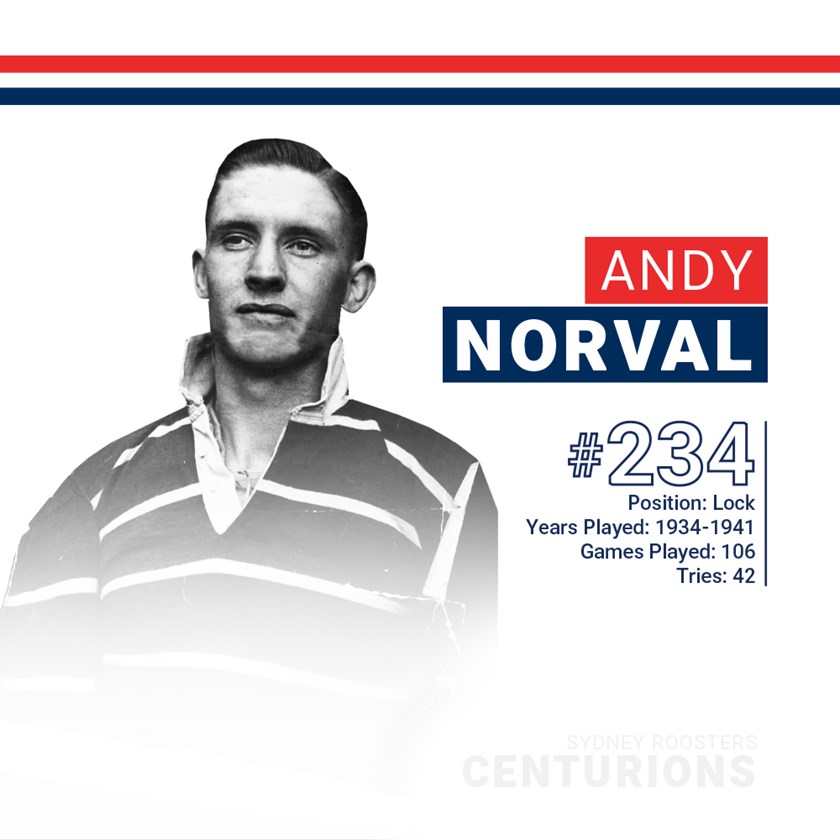
A player of outstanding versatility, Andy Norval was a member of the famous Easts teams that won premierships in 1935,1936,1937 and 1940.
He was best known as a lock, but played his only three Test matches on the 1937–38 Kangaroo tour as a winger.
He joined Easts in 1934 after playing some Australian rules football in South Australia.
Sydney fans saw Norval play every position in the backline bar halfback — an amazing achievement for a forward.
He was incredibly strong and intimidating and combined spectacular cover defence with an ability to score tries.
He finished with 42 tries in 106 first-grade appearances for Easts and scored a try in each of his three Tests.
14. Craig Fitzgibbon (2000-2009)
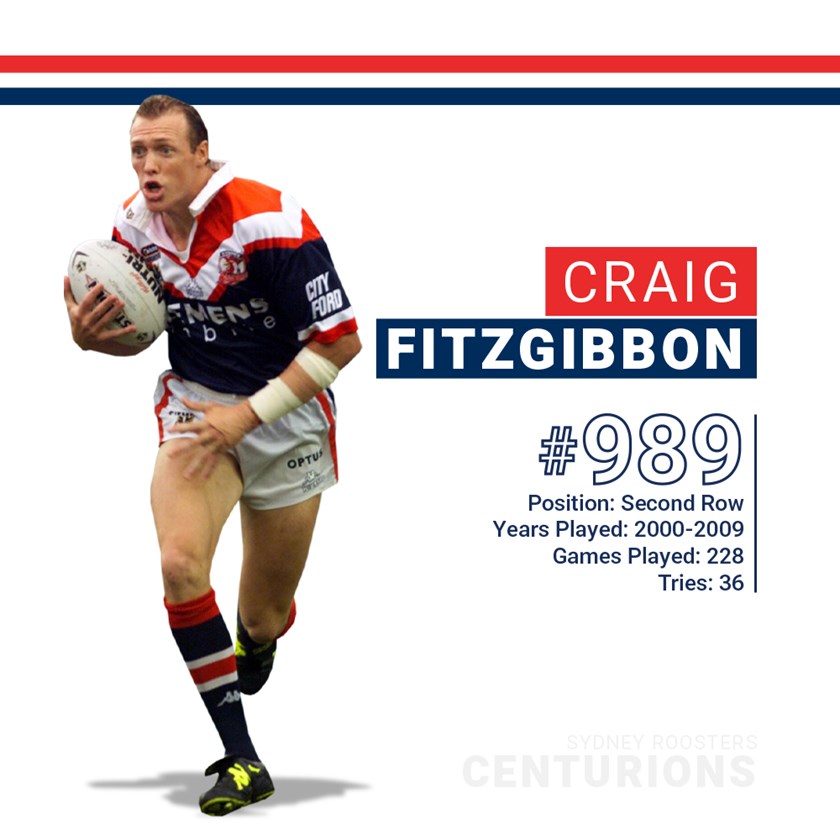
Joining the Roosters in 2000, Craig Fitzgibbon established himself as a great leader, Clubman and a fierce competitor, and one of the most admired players in the modern era.
In 2002, he was a prime contributor to the Roosters’ drought-breaking premiership title and was justly rewarded with the Clive Churchill Medal after amassing a tally of 14 points in the decider with a try and five goals.
His success at representative level was acknowledged in 2004 when Fitzgibbon won the Dally M Representative Player of the Year Award and the inaugural Wally Lewis Medal for the Player of the Series in State of Origin.
At Club level Fitzgibbon received the Sydney Roosters highest honour, the Jack Gibson Medal for the Player of the Year, three times, in 2001, 2002 and 2006.
In 2006, he succeeded Luke Ricketson as captain of the Roosters.
Apart from his non-stop efforts at Club and representative level, Fitzgibbon was also making his mark as a point-scorer.
By 2005 he became the highest scorer in the 97-year history of the Roosters and a year later he became the game’s highest points-scoring forward when he overtook the old mark of 1,218.
In his final season in the NRL, he chalked up more memorable milestones – he passed 1,500 career points, played his 250th career first-grade game and broke into the top 10 all-time point-scorers in Premiership history.
15. Ernie Norman (1931-1939)
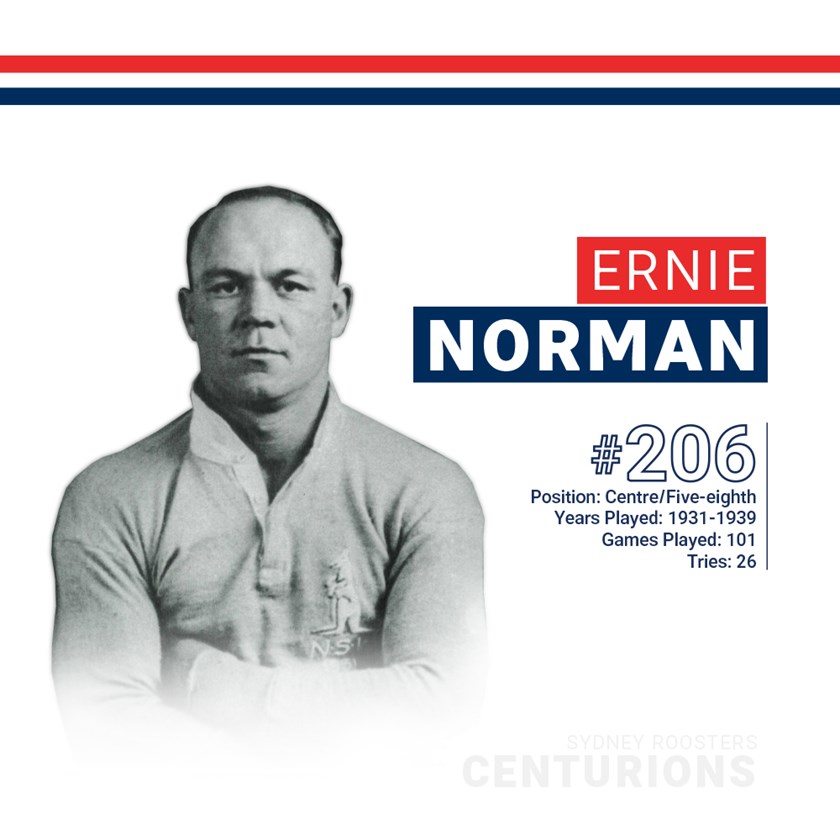
A product of the Paddington and Imperial clubs in Easts' juniors, Norman made his way to grade in 1931 after starring in the Tricolours' President's Cup side the previous year.
Equally at home at centre or five-eighth and described by team-mate Joe Pearce as ''an amazingly low tackler and a very good team player'', Norman made an instant impact in big-time football.
First-grade selection was followed by representative honours for both City and NSW within three months.
He wore the green and gold into one of the toughest Test series of all time in 1932, starring in the epic Battle of Brisbane, won 15–6 by Australia.
Injury cost Norman his place in the 1933–34 Kangaroo squad, but he quickly regained his position for the 1935 New Zealand tour and became a regular in Australian sides until the intervention of the war.
Norman was a member of the champion Eastern Suburbs sides which won three straight premierships and played 101 first-grade matches until his retirement in 1939.
16. Luke Ricketson (1991-2005)
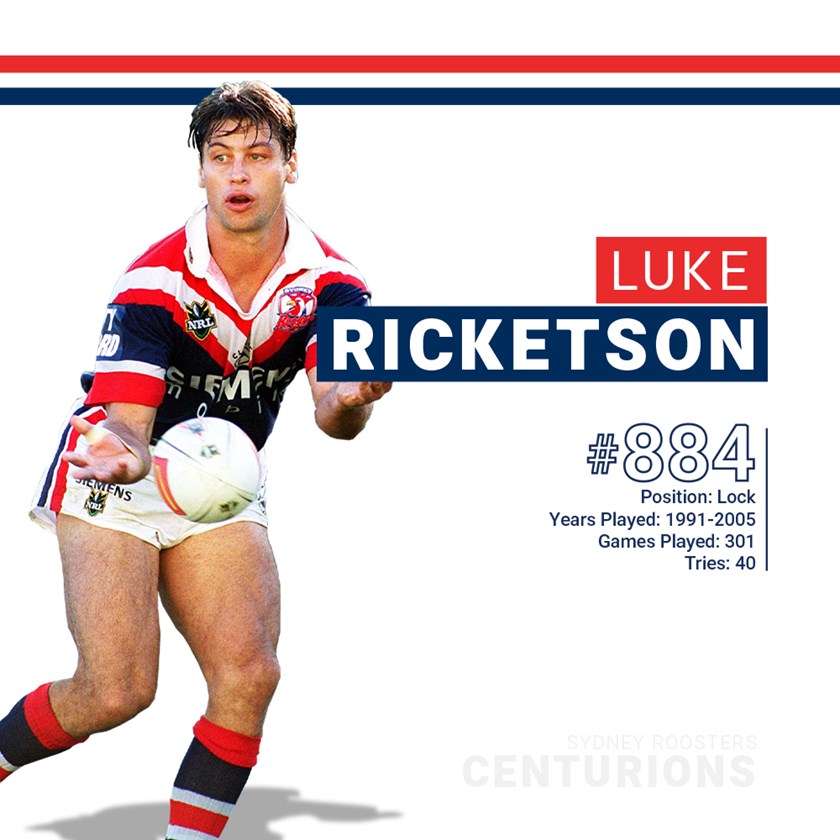
Son of former Easts player, Doug Ricketson, Luke started playing junior rugby league at the age of seven for Bondi United.
He was then graded with Eastern Suburbs as a local junior and made his first-grade debut in 1991.
In 1996, Ricketson made his representative debut when selected for City Origin.
He played again for City in 1997 but had to wait until 1999 to make his State of Origin debut for NSW, coming off the bench in all three games in the first drawn series in Origin history.
Ricketson played at lock for the Sydney Roosters in their 2000 and 2003 grand final defeats.
He also played at lock in the Roosters 2002 Premiership win.
In 2003, he was selected for the Kangaroo Tour where he played all three Tests against Great Britain and helped Australia retain The Ashes with a clean sweep.
Ricketson retired from rugby league after the 2005 NRL season having played 301 games for the Roosters, the last season as captain.
He played in five Tests for Australia and four for Ireland as well as 10 games for NSW and 3 for NSW City.
17. Barry 'Bunny' Reilly (1966-1971, 1973-1979)
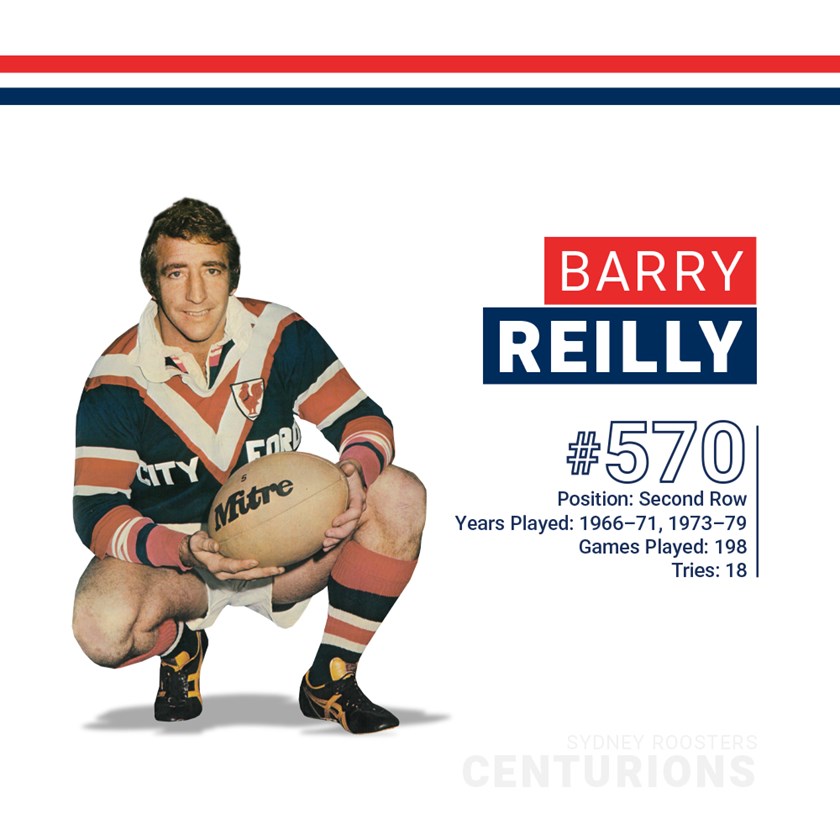
Barry 'Bunny' Reilly was known as ‘The Axe’ because of his defensive technique, which it was said allowed him to chop down opposition attackers like an axe.
An Easts junior, he carved out a career as a wiry, lightweight backrower with a great work rate in defence.
Under Jack Gibson’s coaching in 1974-75, Reilly’s reputation as a workhorse grew and he was a member of the Eastern Suburbs premiership-winning sides in 1974 and 1975.
Reilly played as a prop forward for Eastern Suburbs in the first-ever World Club Challenge match of 1976 against British champions St. Helens.
Head Coach: Jack Gibson (Playing Career 1953-1961, Coaching Career 1967-1968, 1974-1975)
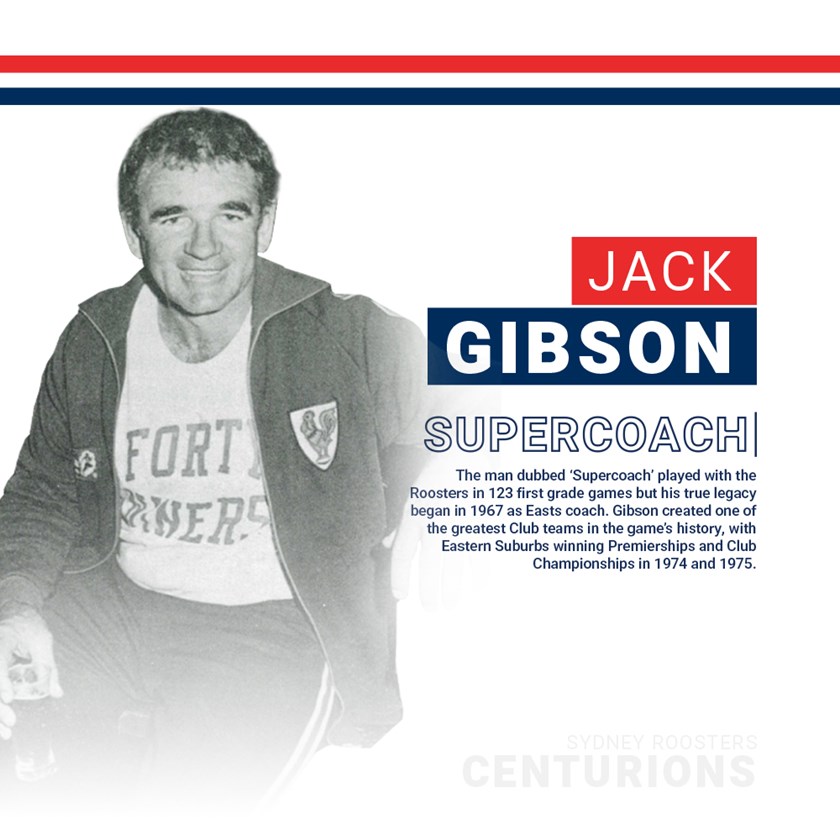
The man dubbed ‘Supercoach’ played with the Roosters in 119 first grade games but his true legacy began in 1967 as Easts coach.
After failing to win a match in 1966, the Gibson was appointed and with a focus on defence, he adopted the tactic of having a mobile, hard-working forward pack combined with a fast-moving defensive line that stifled their opposition.
The Roosters completed the season with the best defensive record in the competition and qualified for the semi-finals.
In 1968 the team finished with the second-best defensive record.
Gibson departed the Club at the end of that season but he returned in 1974 and created one of the greatest Club teams in the game’s history, with Eastern Suburbs winning Premierships and Club championships in 1974 and 75.

Sydney Roosters respect and honour the Traditional Custodians of the land and pay our respects to their Elders past, present and future. We acknowledge the stories, traditions and living cultures of Aboriginal and Torres Strait Islander peoples on the lands we meet, gather and play on.
